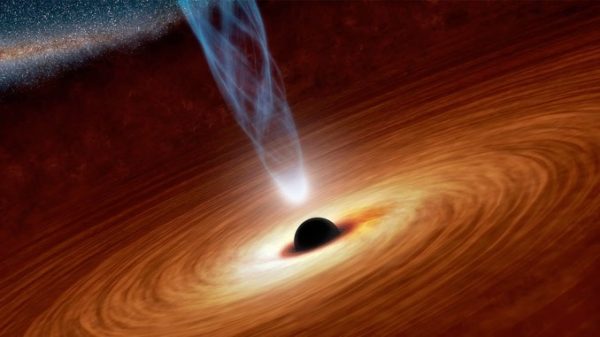New technique touted for spotting elusive black hole mergers – Astronomy Now Online

The Milky Way, like most if not all large galaxies, features a supermassive black hole at its core. Astronomers believe smaller black holes also congregate near the core where it might be possible to detect mergers by their interactions with gas swirling around the much more massive supermassive black hole.
Such mergers are currently detected by the gravitational waves they generate, so-called “ripples” in the fabric of spacetime. They do not, by definition, produce a light signature that would help astronomers pinpoint their locations and glean additional details.
But a new study in The Astrophysical Journal Letters offers a possible way to detect such mergers by the effects they might have on gas surrounding a supermassive black hole.
A large amount of gas falling onto the central black hole would generate a bright disk that would envelop any smaller black holes in the vicinity. Black hole pairs would interact with the gas and spiral closer to the central supermassive black hole, possibly merging in the process.
Merging black holes typically experience a gravity wave velocity boost on the order of 50 kilometres per second (112,000 mph). Nearby gas pulled along by the resulting merged black hole would then ram into neighbouring clouds in a “shock collision.” If the gas is thin enough, detectable light could escape.
Gravity wave detectors have “opened up this whole new way of letting us ‘hear’ how two black holes merge into one,” said Nicholas Ross of the University of Edinburgh, a co-author of the new study. “And if we are correct, there may well now be a way we can see these otherwise invisible events happen.
“This would have deep implications for how we study black holes and for observational cosmology,” he said.
Said co-author Matthew Graham of Caltech: “We’ve got lots of telescopes, such as ZTF (Zwicky Transient Facility), now covering large regions of the sky every night. If there is an optical counterpart, we should see it. If we don’t find any, then that also tells us something interesting.”






